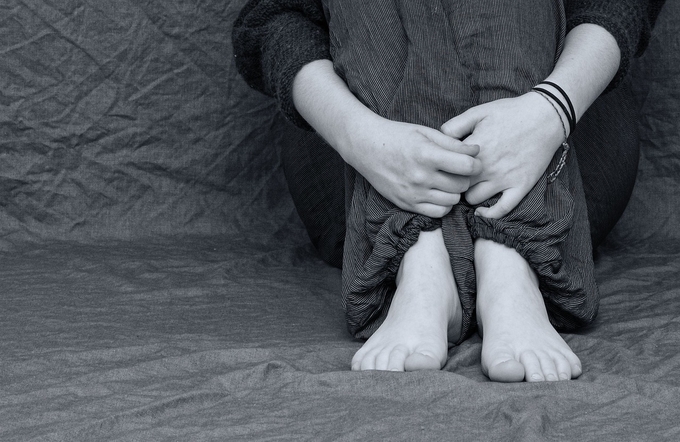
Recently, a survey showed that 5 out of 100 young people are unable to get help because they have lost contact with people. According to a study by the Korea Institute for Health and Social Affairs, the current status of isolated youth is 5.0% among 19 to 34 years old as of 2021. This is an increase of about 1.5% between 3.1% and 2 years in 2019. The social isolation of young people means that there is no interaction with others, and when there is a difficult situation, there is no one who can ask for help. It is said that the social isolation of young people has changed the pattern of social relations, especially physical distancing, which was inevitable to protect lives after COVID-19. In particular, it was found that social isolation can occur for people who start social and social activities, such as independent college students or young people.
In fact, 4 out of 10 isolated young people were found to be dissatisfied with their current life. It is known that about half of them are very dissatisfied, 17.2% and 26.8% are dissatisfied. In the case of non-governmental young people, 23% (very dissatisfied 4.7% and 18.3% dissatisfied) answered that they were dissatisfied, nearly doubling. Only about 8% of isolated young people were very satisfied with their lives, showing a big difference. It was known that socially isolated young people went out relatively low, and the reason was also very noticeable. Most of the reasons why isolated young people do not go out were answered with "others." It turned out that this option was not chosen for various reasons, but because even the clear reason for seclusion could not be explained and was difficult to choose. In addition, it was found that human relationships, academic stress, and interruption were the reasons for not being employed.
In addition, socially isolated young people are in a more difficult environment than non-governmental young people in terms of education and income level. The proportion of socially isolated youth under high school graduation was about 30%, and about twice as high as 16.5% of non-independent youth. More than half, or 53.1 percent, of isolated young people have never engaged in economic activities in the past week, the report showed. In addition, 32.8% of isolated young people responded that their subjective income level was very low, more than doubling when they saw that 16.9% of non-independent young people. Accordingly, young people who are socially isolated are newly discovered welfare needs and new vulnerable groups after the COVID-19 pandemic. It also said that the final goal of the project to support them should be to provide help to live a healthy life while hanging out with local residents outside the vulnerable state.
The social isolation of these young people can be found in nearby university students. In particular, it was easier to find it among exchange students who came to study in Korea from other countries than Korean students. A student majoring in international relations in Russia said that when he came to exchange students, he gave mentors on a 1:1 basis through the buddy program, but this made it more difficult. He said he asked a simple question to his mentor, but that he gave him an insincere answer under the pretext of not speaking Russian or English. He also reported that he contacted them to confirm the location, but the exchange students did not help them adjust to school life, as the contact came too late. Because of this, when I first visited Korea, it was very difficult to adjust. It was also said that the student from Vietnam felt alienated from the activities and presentations he took during the class in classes with Korean students. The Korean student said that despite the classes conducted in English, he wanted to communicate in Korean, not English, and refused to form a team together because he was a foreigner. Most Korean students who are not used to communicating in English do not prefer to prepare for presentations or do group activities with foreigners. It is known that exchange students frequently experience inconvenience because they cannot form a group with Korean students or are not familiar with Korean or English except their native language. The students, who felt alienated from their relationship with Buddy, a Korean student, and among the students who took the class together, said they hung out with their native students and overcame difficulties together and adapted to life in Korea.
These things are common around us as well. In addition to the social isolation of Korean university students, it seems necessary to pay more attention to the social and school isolation of foreign students. However, the biggest problem is that there are not many activities that foreign students can easily access to Korean adaptation and school life. Most of the international students are helping each other, not Korean students. Each university needs to open various programs for foreign students and establish a more systematic system.
Currently, at Keimyung University, the program that foreign students can get help from is the K-MOM(Keimyung-Mind care of Minority) program. K-MOM means taking care of a small number of students at Keimyung University with the heart of their mother, and is a psychological support program for a small number of students at Keimyung University who are prone to alienation. This is aimed at students who need psychological help, such as foreign students, students with disabilities, and transfer students, psychologically, such as school life adjustment. For international students, school adaptation programs are conducted through surveys on the needs of international students, and mentoring programs for international students are conducted. In addition, help is provided in various aspects, such as personal counseling, through mental health truth tests of current and international students. A variety of help includes: workshops for new and transferred students and international students, tips for adjusting to school life, special lectures for current students, and special lectures to help students adjust to school life on topics of major interests such as interpersonal relationships and career or employment.
Social isolation of young people in Korea and abroad is considered a big problem in society enough to lead to lonely deaths of young people. Although the social isolation of young people is emerging as a major social and political problem in Korea, the reality is that social solutions to solve this problem are insufficient. In the case of the socially isolated elderly generation, the welfare system is well established, but practical solutions for the younger age group are far from sufficient. In response, experts also emphasize the paradigm shift of welfare programs centered on the elderly, and believe that solutions should be prepared for young people who have been excluded from social welfare. It is also important to support employment and economic issues that young people, including college students, currently consider the biggest problems, but it is also an urgent task to form a network where they can ask for help. In order to resolve the social isolation of Korean and foreign students, the country needs to prepare a bill politically, and the same students need to pay more attention and care about each other. In addition, various programs are opened for students who are socially isolated or in need in universities, so using on-campus programs if necessary is one of the good solutions.








